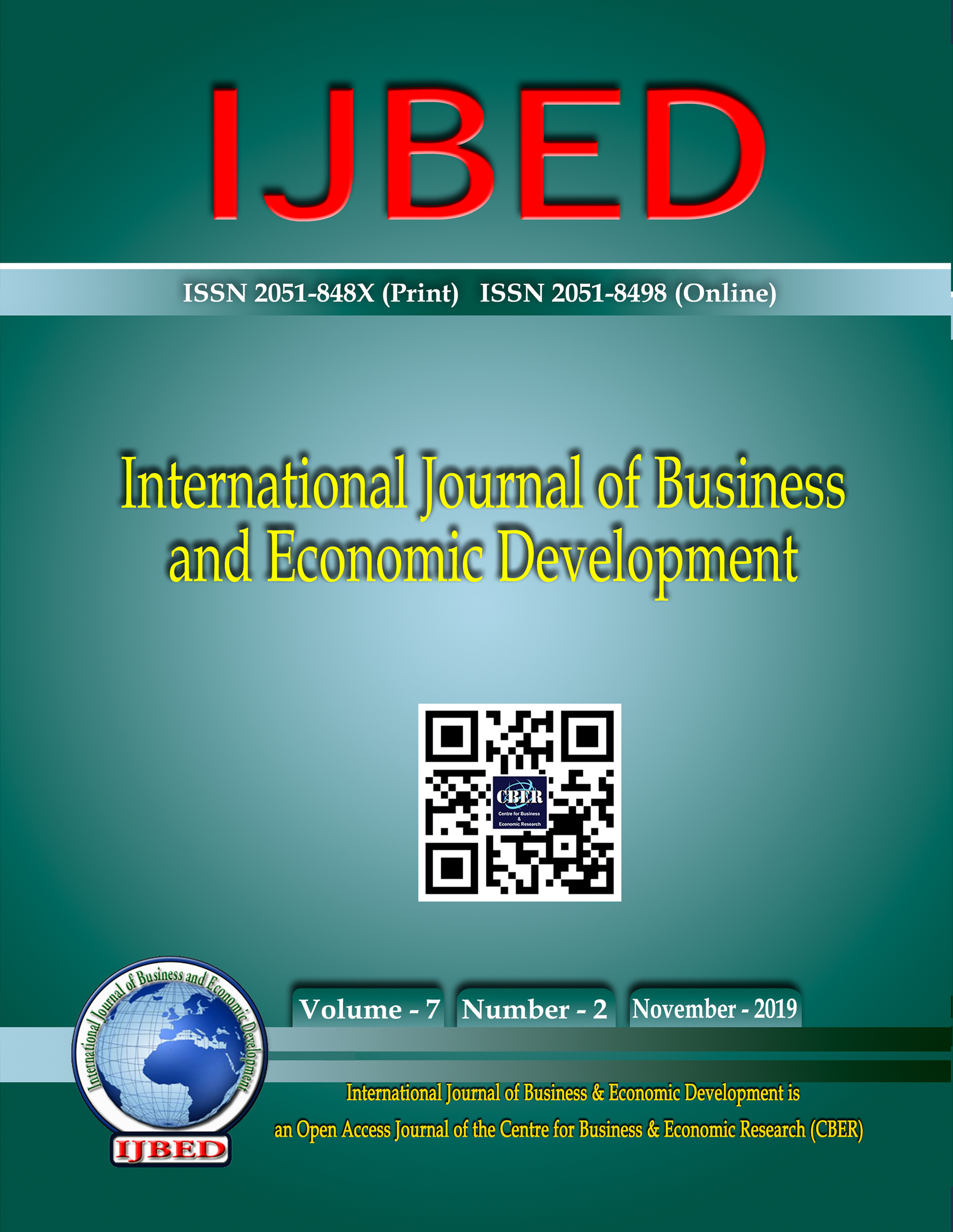Articles
How to value a patent: a simple formula for lost profits patent damages
DOI: https://doi.org/10.24052/IJBED/V07N01/ART-01
-
Patents are valuable only when they are enforced in court. The purpose of this paper is to measure a patent owner’s profits that are lost when a competing firm unlawfully makes infringing sales. Our microeconomic methodology computes a two-firm duopoly equilibrium with an infringer present and compares it with the same market but with the infringer removed. The second equilibrium represents a legally sanctioned single-firm patent monopoly. We derive a single equation representing the lost profits damage percent to be paid to the patent owner by the infringer. We incorporate product demand, both firms’ marginal costs, output, market shares, and prices in our equation. There are three contributions of this paper.
One, we derive the simplest duopoly/monopoly damage equation we have seen that captures all the economic effects into a single percentage damage number.
Second, that damage percent multiplied times the patent owner’s actual profits (with infringement ongoing) equals the dollar damages the infringer should pay in court for the patent owner’s lost profits.
Third, we apply our formula to a small pilot study of classic US patent lost profit cases and find that our equation’s damage predictions had a correlation of .71 with the actual Federal court damage outcomes.
We also illustrate the use of the formula. For example, if a patent owner’s actual profits on its patented product was $10 million with infringing sales present, then lost profits damages due to the patent owner would be $12.5 million if the two firms’ sales were equal. Patent damages increase to over $40 million if the infringer’s market share increased to triple that of the patent owner in the two-firm market.
- View article
Ownership structure and Earnings Management: evidence from Egypt
DOI: https://doi.org/10.24052/IJBED/V07N01/ART-02
-
The purpose of this paper is to investigate the relationships between ownership structure and Earnings Management (EM) of Egyptian companies. Discretionary accruals using the modified Jones model is evaluated to calculate the extent of EM. A sample of 50 companies listed on the Egyptian stock market for twelve years is used in the study. Three ownership indicators for concentration are included in the current research: block holder ownership, managerial ownership, and public ownership. A set of control variables are used in the current study: return on assets, firm size, firm age, debt ratio and market to book value. The statistical results indicated that there is a positive relationship between the Block holder ownership and the degree of earning management. However, no relationship was found between the Managerial Ownership and the Public Ownership on level of Earning Management.
- View article
Brexit: An unhappy marriage to the single market
DOI: https://doi.org/10.24052/IJBED/V07N01/ART-04
-
The United Kingdom has voted to exit the European Union. Within the European Union, the rich states of the north (led by Germany) control most policies, and the less rich states of the southern tier are suffering the effects of austerity (Greece, Spain, Italy). Traditional political parties are losing strength, and populist and nationalist parties are gaining votes and forming coalition governments (Greece, Spain, Italy). The European Union is not serving the needs of all its members, and this casts doubt on the concept of a union of sovereign nations.
- View article
Effect of Key Financial Drivers on Organizational Performance: Evidence from Public Establishments in Nigeria
DOI: https://doi.org/10.24052/IJBED/V07N01/ART-05
-
This paper examined the effect of key financial drivers on organizational performance of public establishments in Nigeria. There exists difficulty in achieving continued exercise and growth, poor management funding, failure to adequately anticipate cash flow, technology or reaction to competition with private establishments, indiscipline among members in public ministry and ill-timed financing. The objectives of this study are therefore to; examine the effect of cash flow management on organizational performance of public establishments in Nigeria and examine the effect of cost management on organizational performance of public establishments in Nigeria. The research design for this study was experimental design used to test the hypothesis in reaching a valid conclusion. The population of the study comprised of the public establishments in Ogun State, and the target population of the study was Agbado District Comprehensive High School, Oke Aro, Ogun State using purposive sampling. The study employed the use of primary data through the administering of questionnaire. Multiple regression models were used to analyze the data. Based on the findings, the study recommended that public establishments should take advantage of the excellent benefits derivable from the adoption of well-designed cash flow management. Also, public establishments should carefully implement cost management techniques to aid business performance and ensure continuity.
- View article
Previous Issue
- Volume 13 Issue 01
- Volume 12 Issue 02
- Volume 12 Issue 01
- Volume 11 Issue 02
- Volume 11 Issue 01
- Volume 10 Issue 02
- Volume 10 Issue 01
- Volume 09 Issue 02
- Volume 09 Issue 01
- Volume 08 Issue 02
- Volume 07 Issue 02
- Volume 07 Issue 01
- Volume 06 Issue 3
- Volume 06 Issue 2
- Volume 06 Issue 1
- Volume 05 Issue 3
- Volume 05 Issue 2
- Volume 05 Issue 1
- Volume 04 Issue 3
- Volume 04 Issue 2
- Volume 04 Issue 1
- Volume 03 Issue 3
- Volume 03 Issue 2
- Volume 03 Issue 1
- Volume 02 Issue 3
- Volume 02 Issue 2
- Volume 02 Issue 1
- Volume 01 Issue 3
- Volume 01 Issue 2
- Volume 01 Issue 1



